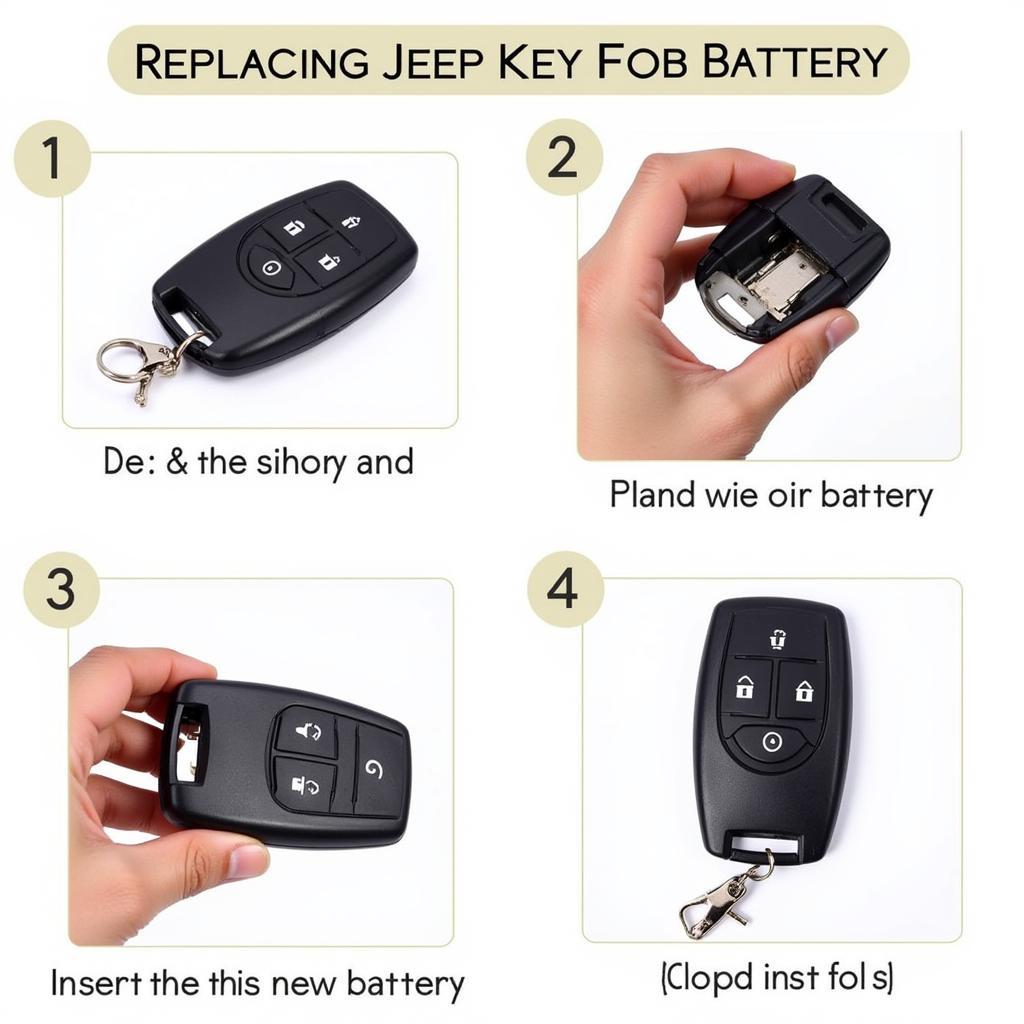The brake warning light on your dashboard is a crucial safety feature, and when it illuminates in your 2003 Jeep Liberty, it’s essential not to ignore it. This light can signal various issues, from low brake fluid to more serious problems within the braking system. This comprehensive guide will delve into the common causes of a 2003 Jeep Liberty brake warning light, how to diagnose the problem, and the potential solutions.
Understanding Your Jeep Liberty’s Brake Warning Light
The brake warning light in your 2003 Jeep Liberty is designed to alert you of potential issues within the braking system. When you start your vehicle, the light should illuminate briefly as a bulb check and then turn off. If the light stays on, flashes intermittently, or comes on while driving, it signifies a problem that needs immediate attention.
Common Causes of a 2003 Jeep Liberty Brake Warning Light
There are several reasons why your Jeep Liberty’s brake warning light might be on. These include:
- Low Brake Fluid: This is the most common culprit. Brake fluid is essential for transmitting force from the brake pedal to the wheels, allowing your vehicle to stop.
- Worn Brake Pads: Brake pads wear down over time, and when they reach a certain point, a sensor will trigger the brake warning light.
- Faulty Brake Lines or Hoses: Leaks in the brake lines or hoses can lead to a drop in brake fluid pressure, activating the warning light.
- ABS Issues: If your Jeep Liberty is equipped with an Anti-lock Braking System (ABS), a malfunctioning ABS module or sensor can trigger the brake warning light.
- Parking Brake Engaged: Accidentally leaving the parking brake even partially engaged can cause the light to stay on.
Diagnosing the Problem: A Step-by-Step Guide
Before you start working on your brake system, it’s crucial to take necessary safety precautions. Always park your vehicle on a level surface, engage the parking brake, and disconnect the negative battery cable before starting any inspection or repair.
- Check the Brake Fluid Level: Locate the brake fluid reservoir under the hood. The reservoir will have a “Min” and “Max” marking on the side. If the fluid level is below the “Min” mark, it needs to be topped up.
- Inspect the Brake Pads: Check the brake pads through the spaces between the wheel spokes. Look for signs of excessive wear or if the pad material is significantly thin. If the pads are worn, they need replacement.
- Examine Brake Lines and Hoses: Visually inspect the brake lines and hoses for any signs of leaks, cracks, or damage. If you notice any leaks, it’s crucial to have them repaired by a professional.
- Consider ABS Issues: If you suspect an ABS problem, it’s best to consult a qualified mechanic. Diagnosing ABS issues often requires specialized tools and knowledge.
Potential Solutions for a 2003 Jeep Liberty Brake Warning Light
Depending on the diagnosis, the solution to your brake warning light problem could be:
- Adding Brake Fluid: If the brake fluid level is low, carefully add the correct type of DOT 3 or DOT 4 brake fluid recommended for your Jeep Liberty.
- Replacing Brake Pads and Rotors: Worn brake pads require replacement. It’s often recommended to replace rotors simultaneously for optimal braking performance.
- Repairing or Replacing Brake Lines/Hoses: Damaged brake lines or hoses need immediate attention and professional repair or replacement.
- Addressing ABS Issues: If you suspect an issue with your ABS system, consult a qualified mechanic to diagnose and repair the problem.
When to Seek Professional Help
While some brake warning light issues can be addressed with basic DIY maintenance, it’s essential to remember that brakes are a critical safety system. If you’re uncomfortable working on your vehicle’s brakes or if the problem persists after basic troubleshooting, it’s always best to seek professional help from a qualified mechanic.
Expert Insight
“Ignoring a brake warning light can be dangerous,” says John Smith, a certified automotive technician with over 20 years of experience. “Brakes are your vehicle’s most crucial safety system, and any issues should be addressed promptly. While some problems might seem minor, like low brake fluid, they could indicate a more serious underlying problem if left unchecked.”
Keeping Your Jeep Liberty’s Brakes in Top Condition
Regular maintenance is key to preventing brake problems and ensuring the longevity of your braking system. Here are some tips to keep your Jeep Liberty’s brakes in top condition:
- Regular Brake Inspections: Inspect your brakes visually every time you change your oil or at least every six months.
- Timely Brake Fluid Flushes: Brake fluid absorbs moisture over time, reducing its effectiveness. Have your brake fluid flushed according to your Jeep Liberty’s maintenance schedule.
- Listen for Noises: Pay attention to any unusual noises coming from your brakes, such as grinding, squealing, or clicking.
Conclusion
Addressing a brake warning light in your 2003 Jeep Liberty is crucial for your safety on the road. By understanding the potential causes, following the diagnostic steps, and seeking professional help when needed, you can ensure your vehicle’s braking system is in optimal working order.


